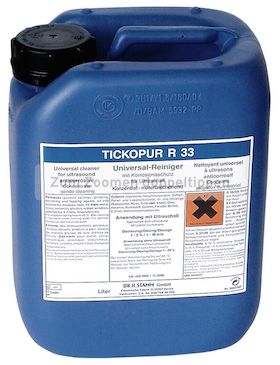
Curated with aloha by
Ted Mooney, P.E. RET

The authoritative public forum
for Metal Finishing 1989-2025

-----
How to clean anodized parts?
Q. We perform a cleaning process on parts that have "ANODIC COATING PER MIL-A-8625 TYPE II, 15 TO 25 MICRON THICK, CLASS 2, COLOR LUSTERLESS BLACK. SEAL WITH NICKEL FLUORIDE".
The cleaning process includes ultrasonic cleaning with acetone. After the cleaning we can see on some of the parts white stain. Is the sealing damage from the ultrasonic cleaning?
Eng. - Israel
April 14, 2024
2nd Request
Q. We put our aluminum parts that ANODIC COATING PER MIL-A-8625 TYPE II CLASS 2, 10 TO 15 MICRONS THICK, BLACK COLOR PER FED-STD-595 NO. 37038,
into ultrasonic bath field with TICKOPUR R30 1% & 99% DI water for 10 min.
After that we put the part in acetone for 5 min.
After this process we exhibit white stain. Do you know what could be the reasons?
Special Processes engineer - Israel
December 3, 2024
⇩ Related postings, oldest first ⇩
Q. I am working with anodized 6061-T6 aluminum. Even after anodizing, the parts are still displaying burrs and small flakes if subjected to physical shock of any substantial value above lifting from or placing the parts on a table. The parts contain both threads and baffling, which the burrs and flakes are clearly coming from, and are used for holding some small lenses. I have tried multiple deburring methods, chemical cleanings before anodization, Wire brush and dremmel scrubs after anodization and even polishing before anodization. I would appreciate any suggestions for removing this dirt and burrs. The lenses I use are sealed in the part and are covered with specks of dirt/burrs whenever the final setup is shocked.
Please help.
- Fenelton, Pennsylvania, USA
2002
A. Two things. One, I suggest you do all of your mechanical finishing prior to anodizing. I'm not sure what to recommend, because I don't know the size or configuration of the part. However, I think the most important item, or #2 is that you should ultrasonically clean your parts prior to anodizing.

AF Kenton
retired business owner - Hatboro, Pennsylvania

Aluminum How-To
"Chromating - Anodizing - Hardcoating"
by Robert Probert
Also available in Spanish
You'll love this book. Finishing.com has sold almost a thousand copies without a single return request :-)
A. 1. Kenton above is absolutely 100% on the mark. Get all the burrs off BEFORE anodizing either mechanically or by etching.
2. Then understand that anodizing (Aluminum Oxide) is very hard, very brittle, and builds in a perpendicular plane from the substrate. On the inside of the bottom of a thread the adjacent planes in the deep acute angle build out 90 degrees until the oxide from each plane crashes into each other, cracks, flakes, and falls out. Conversely, on the top of the threads, where the substrate is very very thin, the very point is open because of the 90 degree phenomena, but also very brittle because the point itself is pure aluminum oxide
- look at it straight and it will crack off.
Your options include, (1) Higher temperature anodizing which produces a slightly softer coating (2) Sealing to the maximum which slightly softens the coating, but most of all reducing thickness which will limit the two planes crashing into each other.

Robert H Probert
Robert H Probert Technical Services
Garner, North Carolina

Q. Parts are cleaned multiple times by ultrasonic cleaning prior to anodization. Part is semi-cylindrical and stepped from 1 inch I.D. to 1.5 inch I.D.
John Chovanes [returning]- Fenelton, Pennsylvania, USA
A. Your parts don't sound like they should be a problem. I think you must have a chemical contamination problem. The only other thing I can suggest is to clean in D.I. water. Normally ultrasonics don't work well in D.I., but that is the best I can come up with.

AF Kenton
retired business owner - Hatboro, Pennsylvania
Multiple threads merged: please forgive chronology errors and repetition 🙂
for Shops, Specifiers & Engineers

avail from eBay, AbeBooks, or Amazon
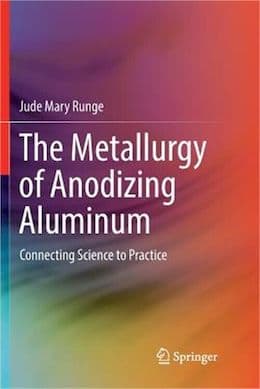
avail from eBay, AbeBooks, or Amazon
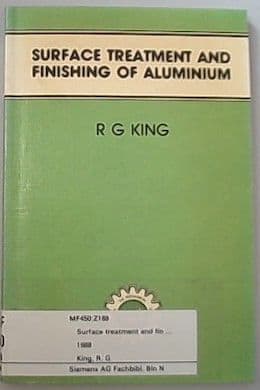
avail from eBay, AbeBooks, or Amazon
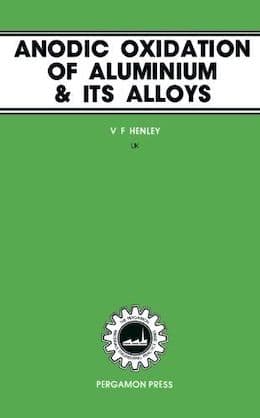
avail from eBay, AbeBooks, or Amazon
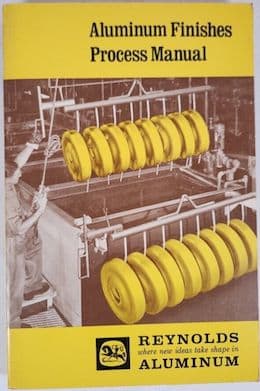
avail from eBay, AbeBooks or Amazon
(as an Amazon Associate & eBay Partner, we earn from qualifying purchases)
Q. I have some problems with removing metal and polymer deposit from anodized aluminium parts. I had tried acetone to clean the deposits, but it doesn't work. Currently I am using scotchbright to scrub the deposit but this method will decrease the life span of the anodized layer. What I know is that acid, alkaline and ultrasonic all will damage the anodized layer. So is there any other way to clean the deposit from the anodized part?
Morgan TeeCleaning - Singapore
2006
A. Anodized surfaces can be hard to clean. I believe that acetone ⇦ this on eBay or Amazon [affil links] Warning! highly Flammable! is a good approach, but you've tried that. IPA may work, but if acetone didn't it's not likely unless the particular polymer is alcohol soluble. Pending my becoming better informed, I don't quite share your concern about ultrasonic cleaning. I did see a NASA report of 7075 parts damaged by ultrasonic cleaning and IPA, but there seemed to be a strong possibility that those parts were not anodized right such that they have been damaged by the next process solution they saw, no matter what it was :-)

Ted Mooney, P.E.
Striving to live Aloha
finishing.com - Pine Beach, New Jersey
A. Although I cannot state the source(s), as it's confidential, I've seen data from 2 major Semiconductor OEM's that shows ultrasonic cleaning to be detrimental to the anodize coating.

Marc Green
anodizer - Boise, Idaho
A. You need to remove both the metal and polymer stains without damaging your Aluminium anodize. The questions would be, is the anodize sealed or not sealed? Did the stain occur before or after the seal?
If the part is sealed and the stains occurred after the seal, then Nitric acid would remove the stains without damage to the sealed anodize.
If the part is not sealed, Nitric acid may still remove the stains.
If Stains occurred before the part became sealed, there is little or no chance stains can be removed without stripping the anodic layer.
Good lock.
- Dayton, Ohio
Ed. note: More about nitric acid cleaning of aluminum can be found on thread 32785, "Post-anodize cleaning with nitric acid"
Q. We are cleaning black anodize aluminum 6061-T6 parts for a high energy laser environment and have been experiencing mixed results. Sometimes after the cleaning process we are able to wipe the surface, and traces of the dye will be on the swab. We use an acetone-hexane mix to clean the parts in an ultrasonic bath followed by a DI rinse. We specify type II for the anodize. Any idea why this process would cause problems at times but not all the time?
Bill Clark- East Providence, Rhode Island, USA
March 28, 2013
A. If your cleaning solution is between pH 6.5 and 7.5, and the swab picks up dye, then the incoming dyed anodizing was not sealed. You need to implement an ASTM seal test program and reject incoming anodizing that does not pass the tests.

Robert H Probert
Robert H Probert Technical Services
Garner, North Carolina

Q. We do 6063 Black color anodized materials, supplied to a customer and they dip it into Trichloroethylene chemical with heated up temperature of 89 °C.
This caused the color of the Black anodized to be fading, as shown in the picture.
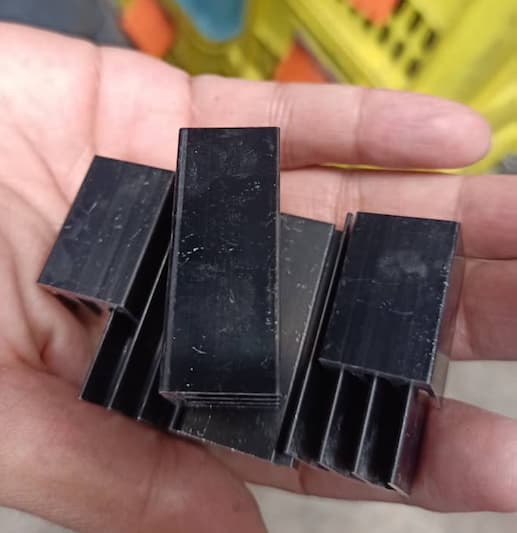
May I know, is it proper to dip color anodized material into Trichloroethylene for cleaning purpose?
LIM YING PIO- Klang, Malaysia
May 18, 2021
A. 1. The temperature alone will fade the black dye.
2. The black dye was not completely sealed.

Robert H Probert
Robert H Probert Technical Services
Garner, North Carolina

Q, A, or Comment on THIS thread -or- Start a NEW Thread
